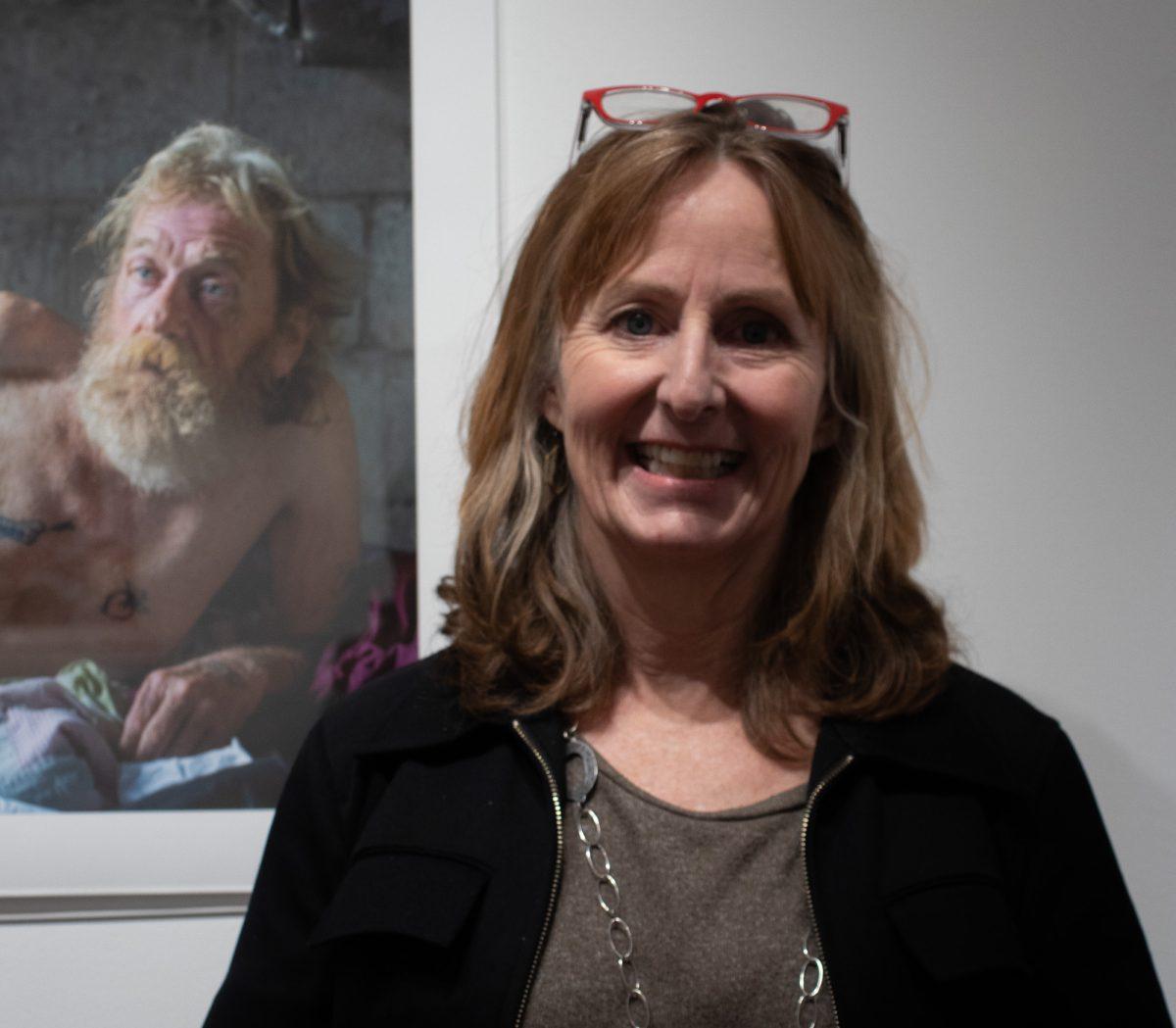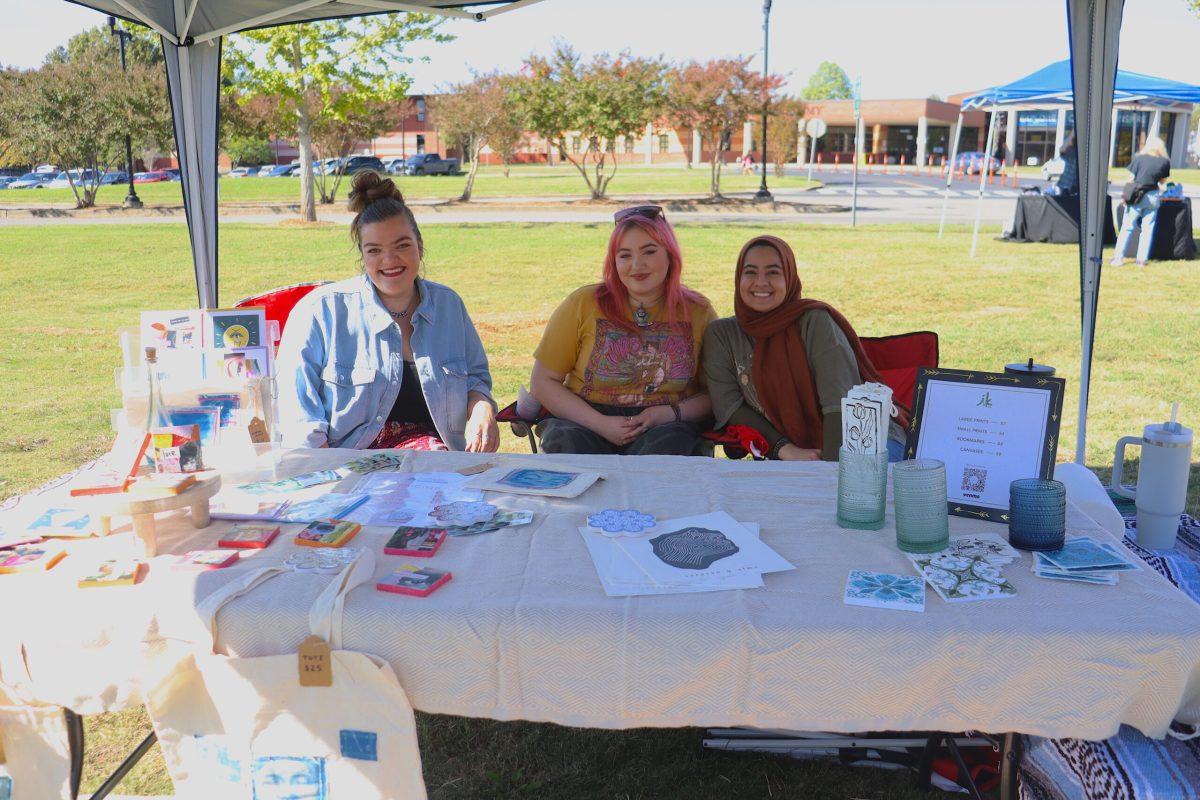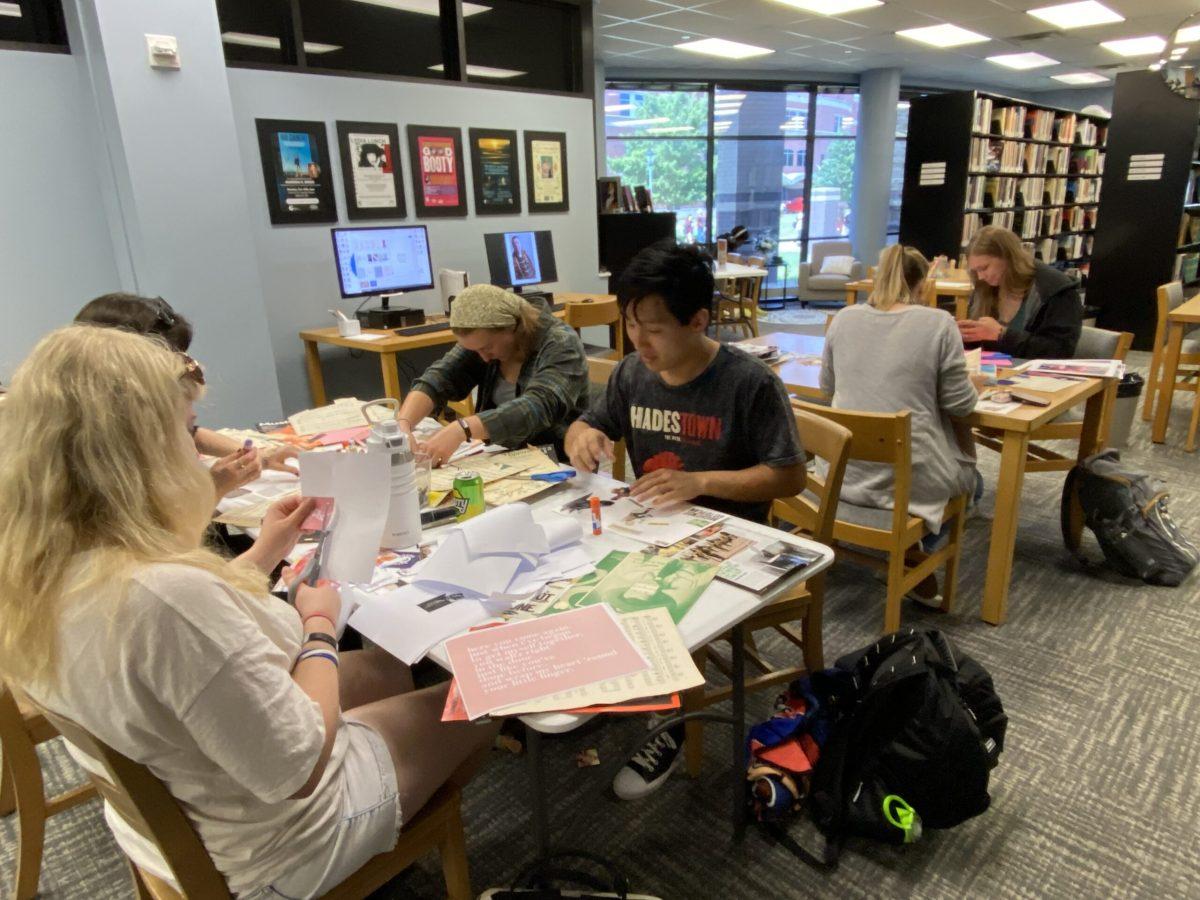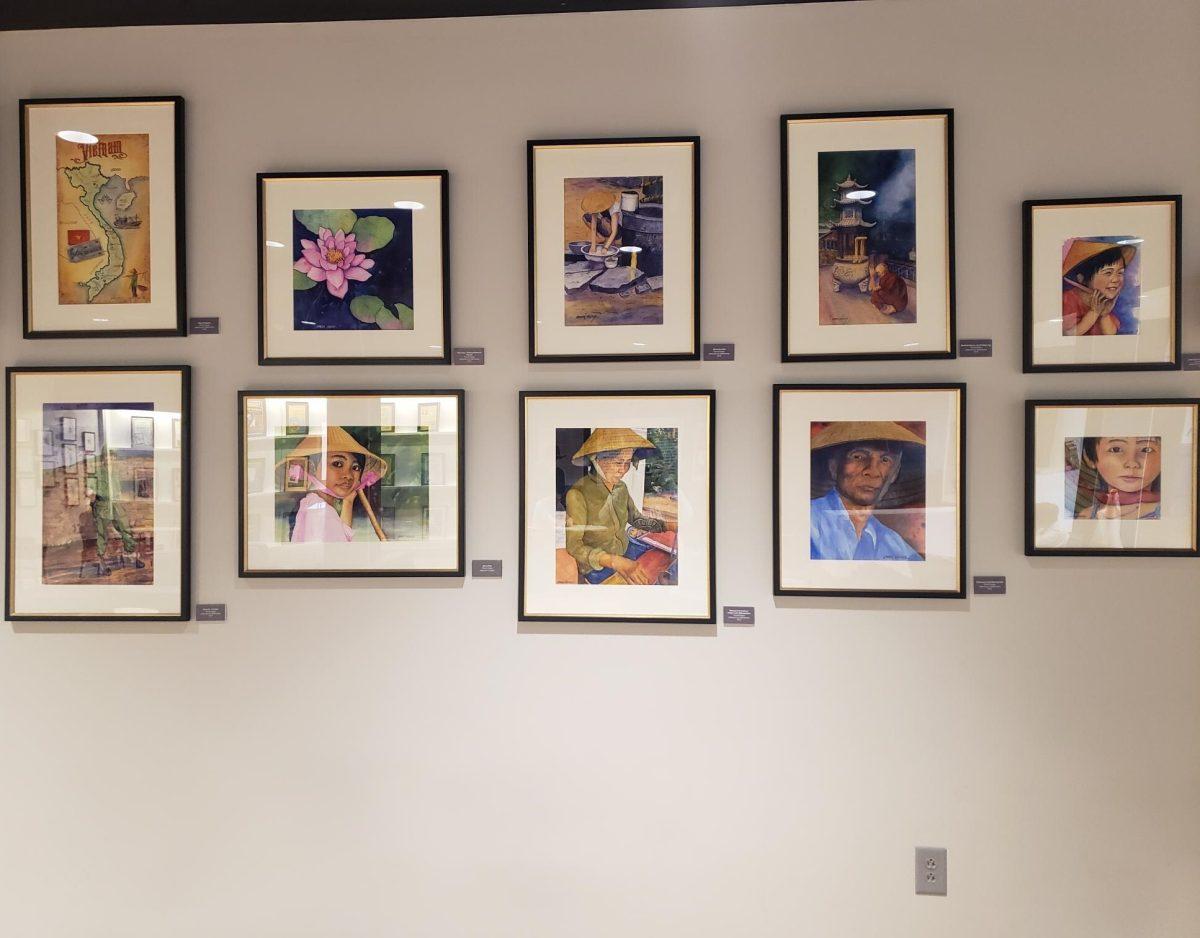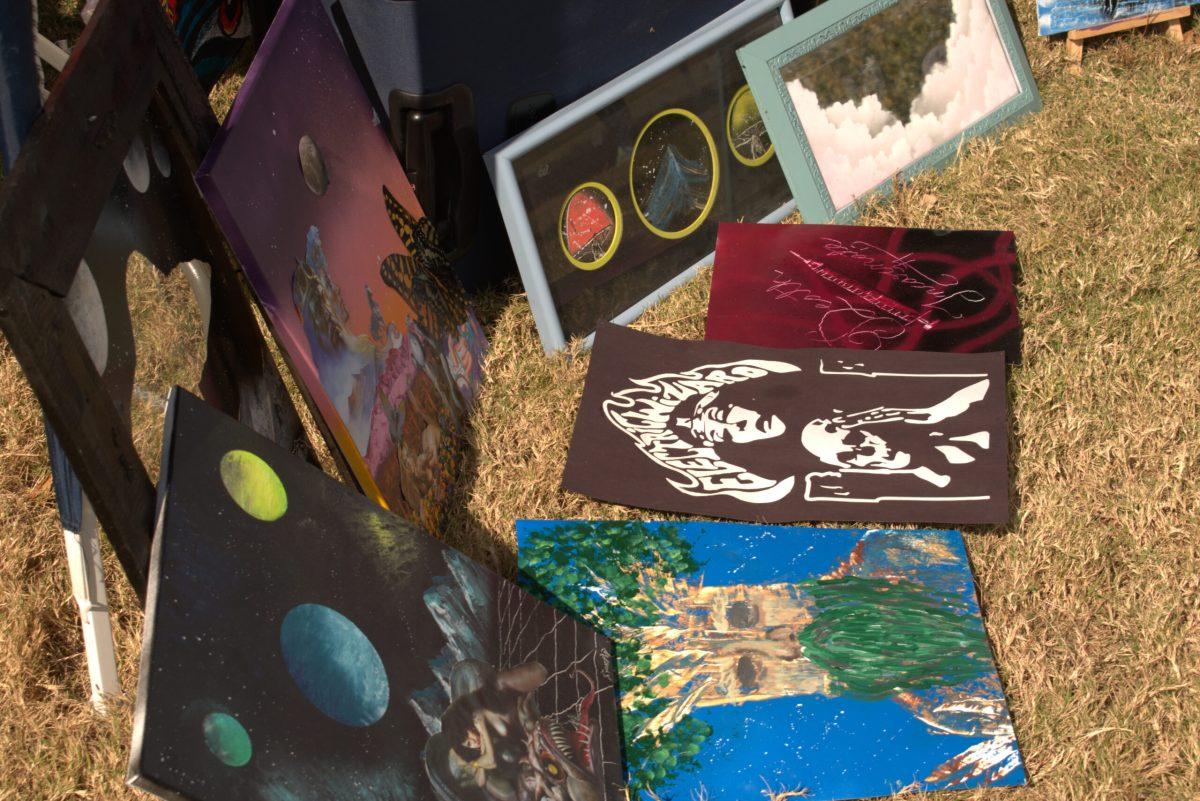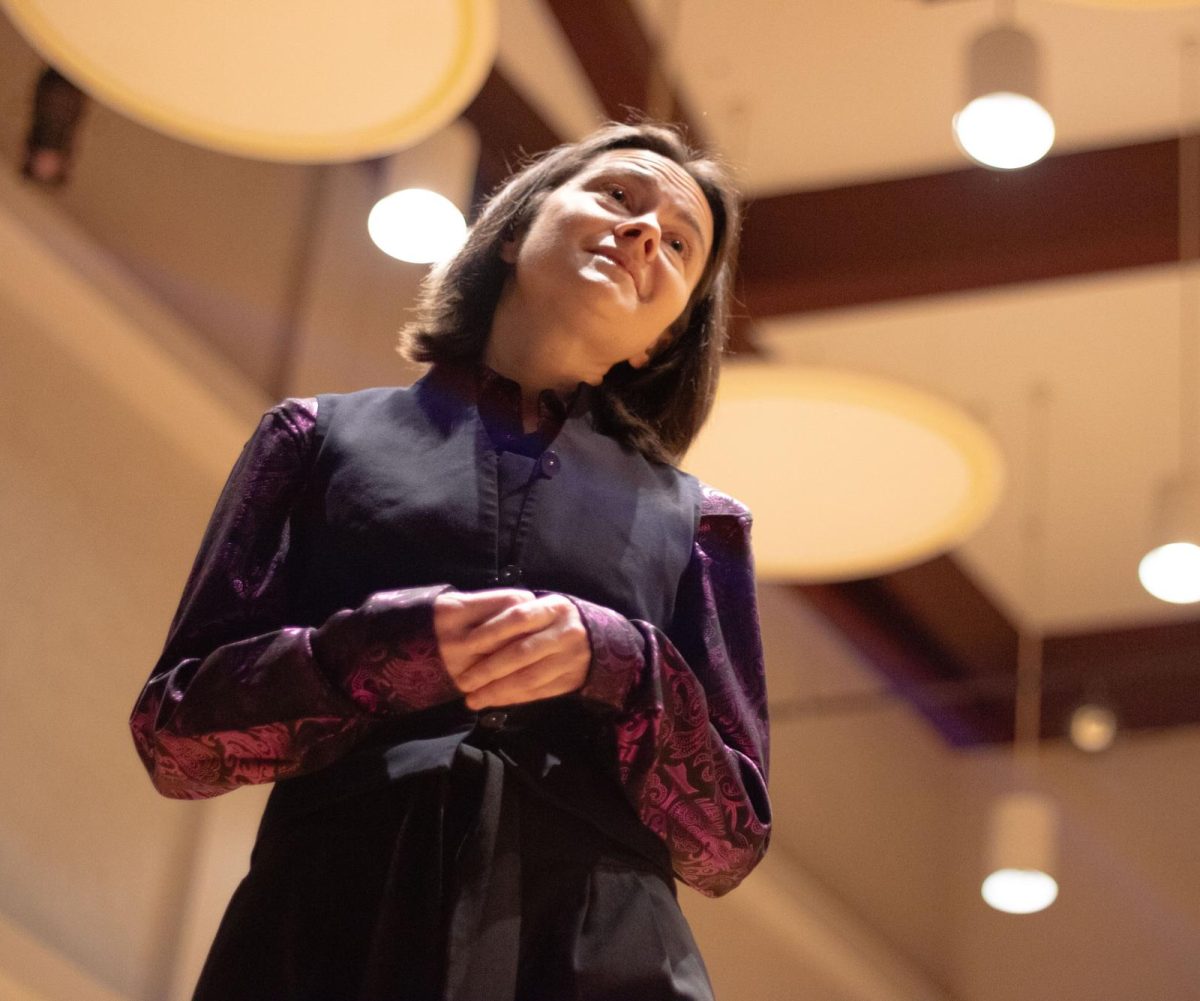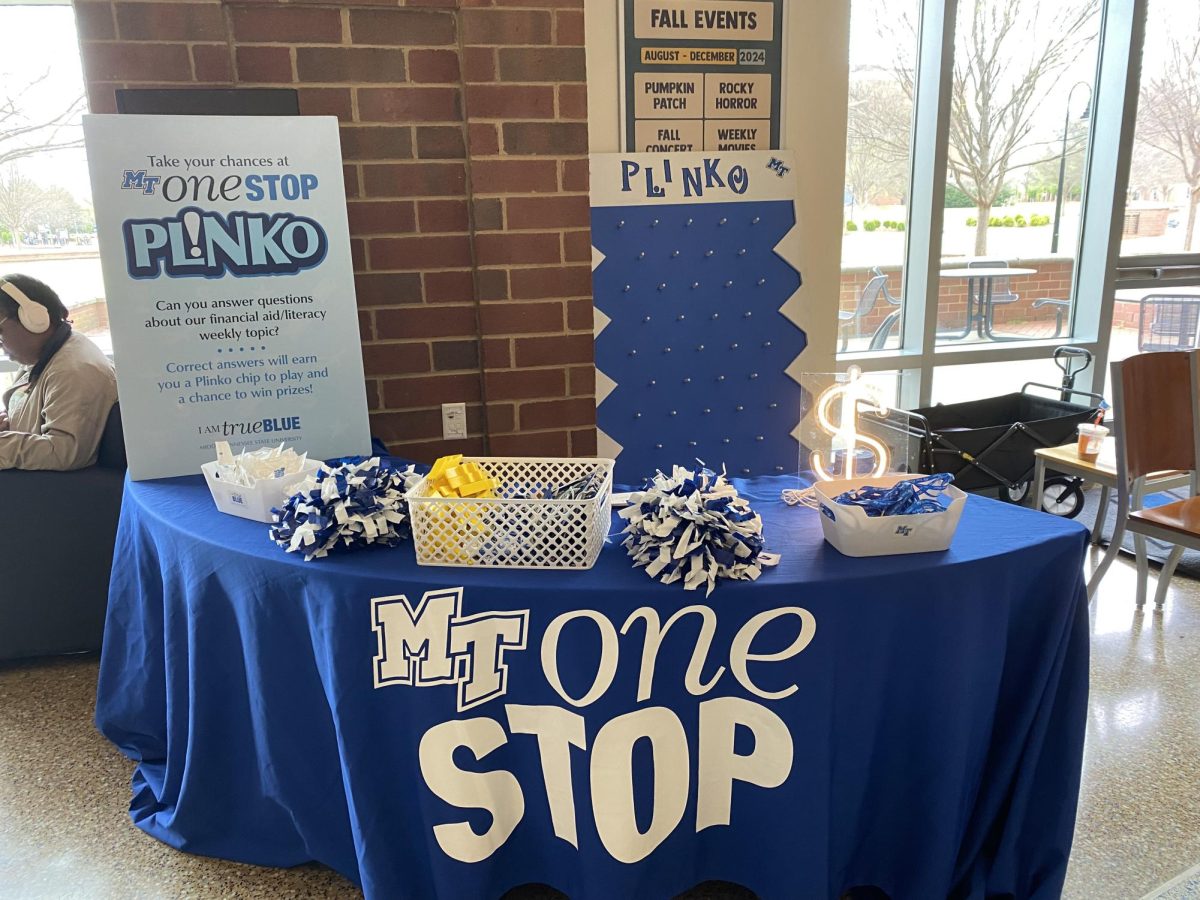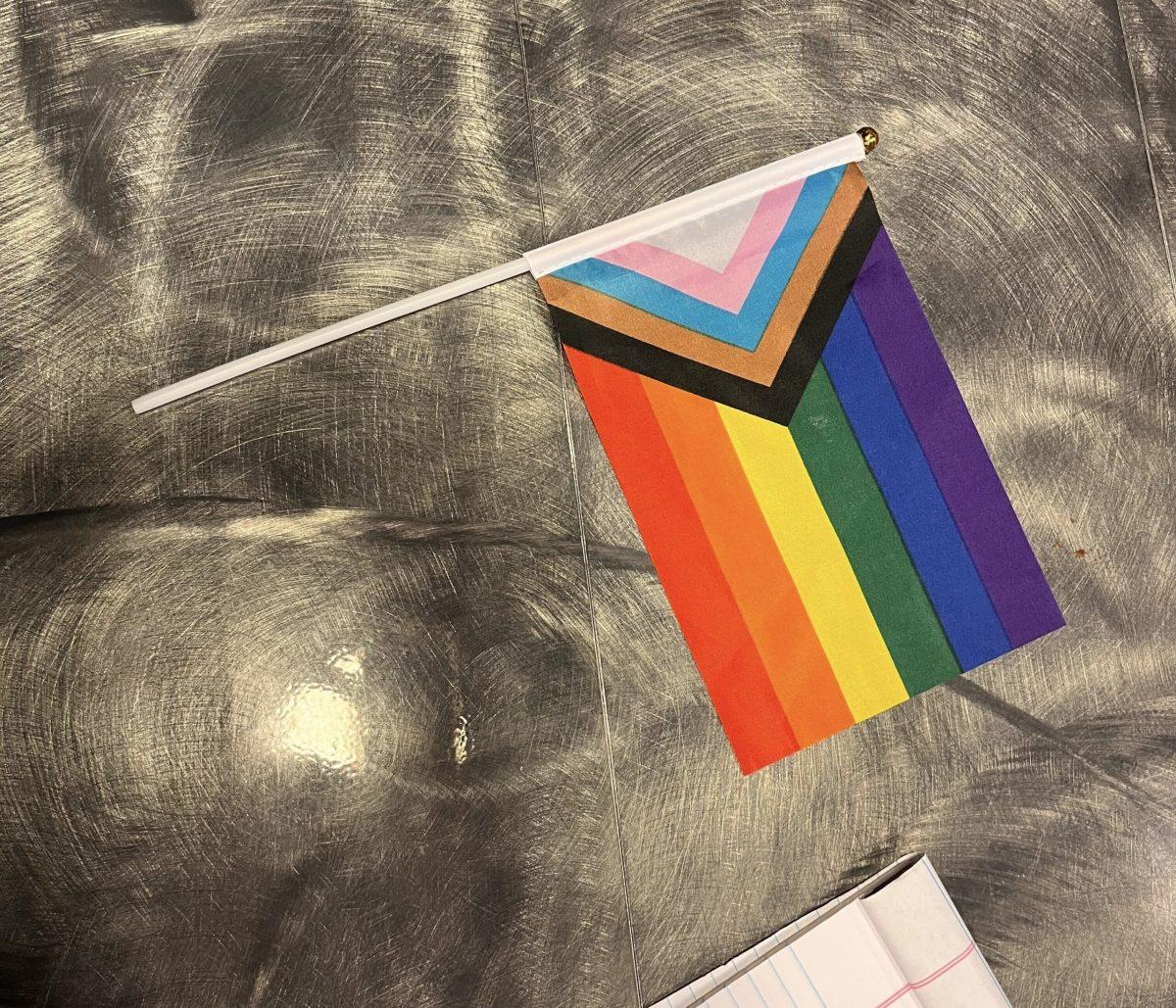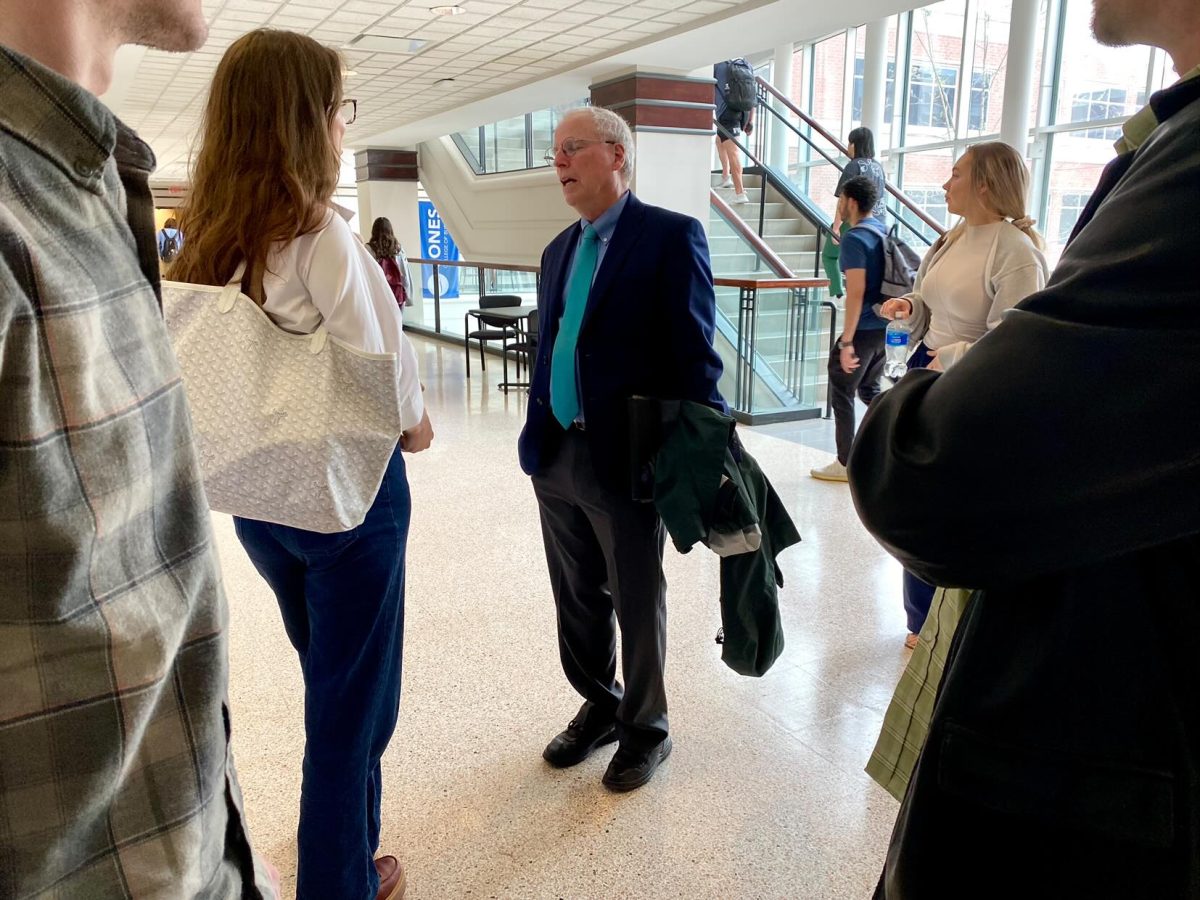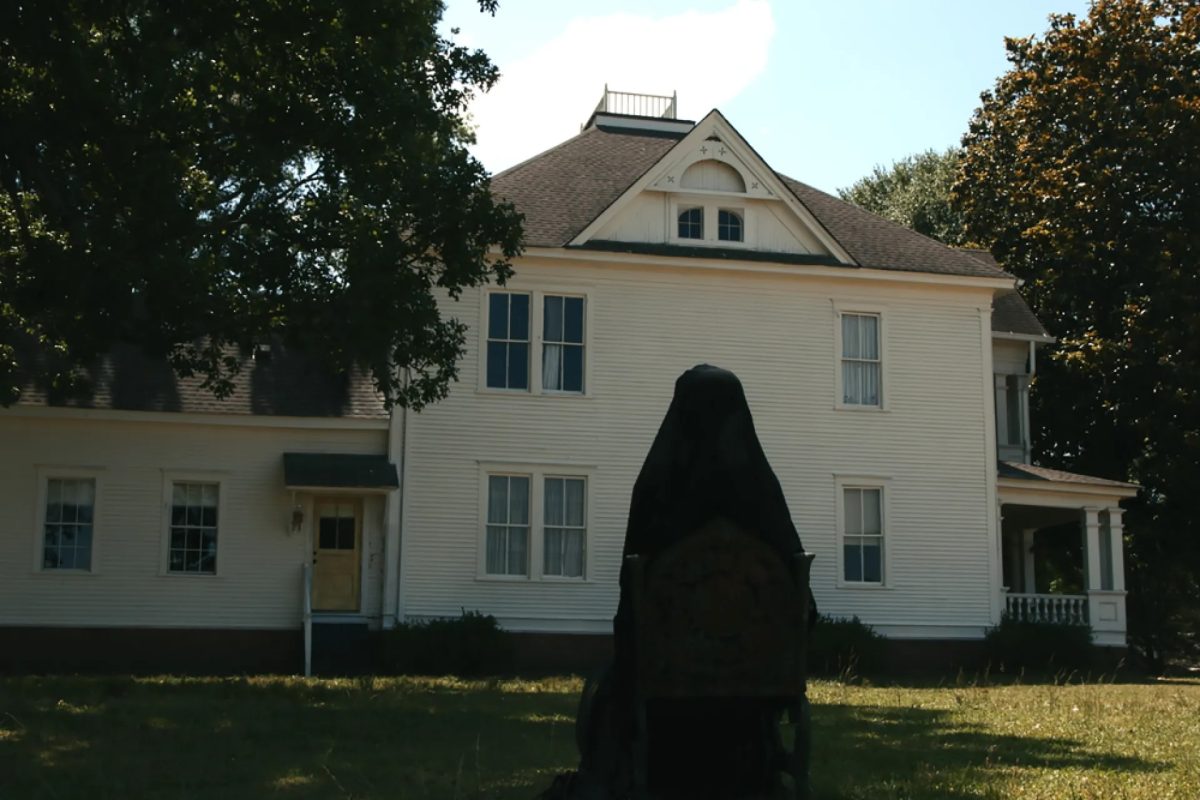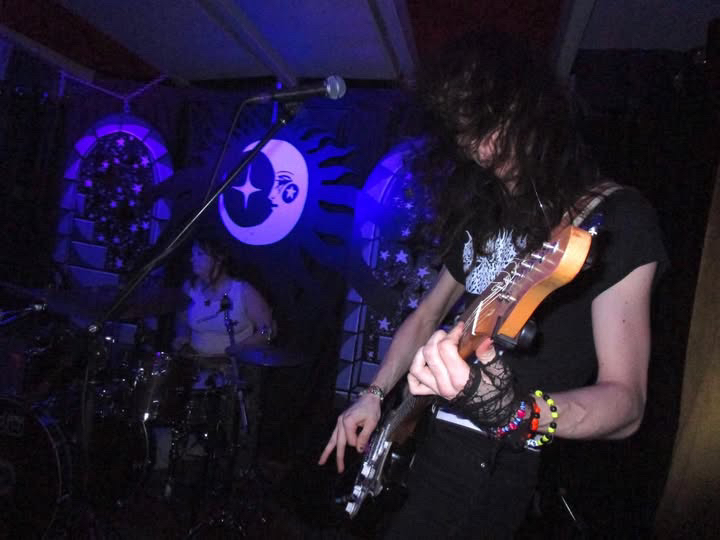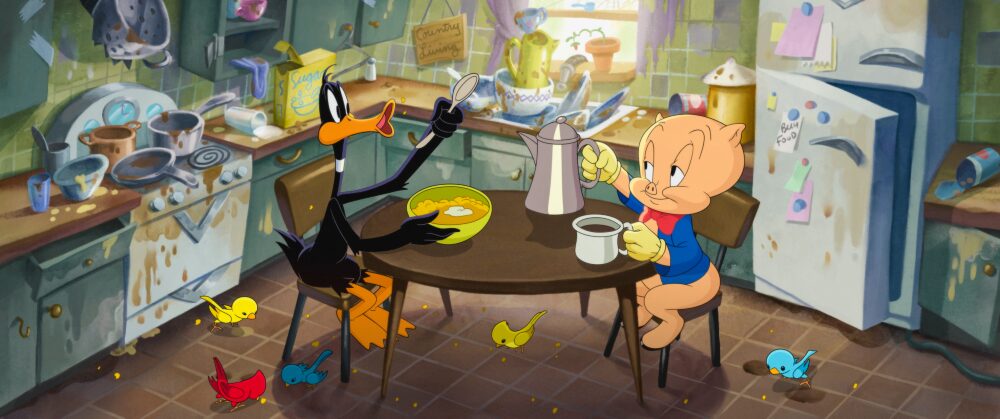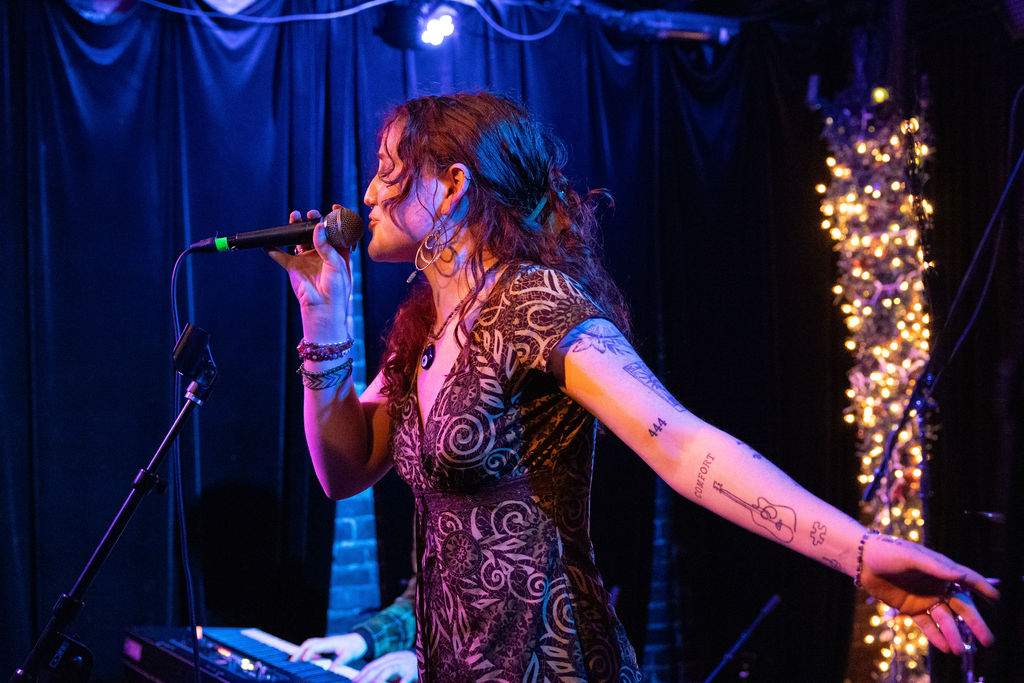Featured Photo by Larry Rincon
Story by Larry Rincon
In the Baldwin Photographic Gallery, the walls are covered in photos of people struggling with addiction. The photos are by Tamara Reynolds, a documentary photographer and Middle Tennessee State University alumna who visited campus Tuesday to talk about her photobook “The Drake”.
The photobook is Reynolds’ way of documenting people with addiction and sharing the humanity behind it. The photos share stories few are willing to share.
The title of her photobook is derived from a motel that used to be located on the corner of
Murfreesboro Pike. Reynolds explained that she found herself one mile from the center of
downtown Nashville and came across an old Waffle House Café. In front of that stood vintage “The Drake Motel.” She found herself drawn to the action and activity before her and returned to the area many times.
The panel featured several MTSU professors including Dr. Vickie Harden, Dr. Ashleigh
Mckinzie, Dr. Tom Black and Dr. Bethany Wrye. A current MTSU student Haleigh Dotson served
as the panel moderator.
Instead of solely focusing on the photo book, the panel went into a deep dive about life aspects
surrounding addiction.
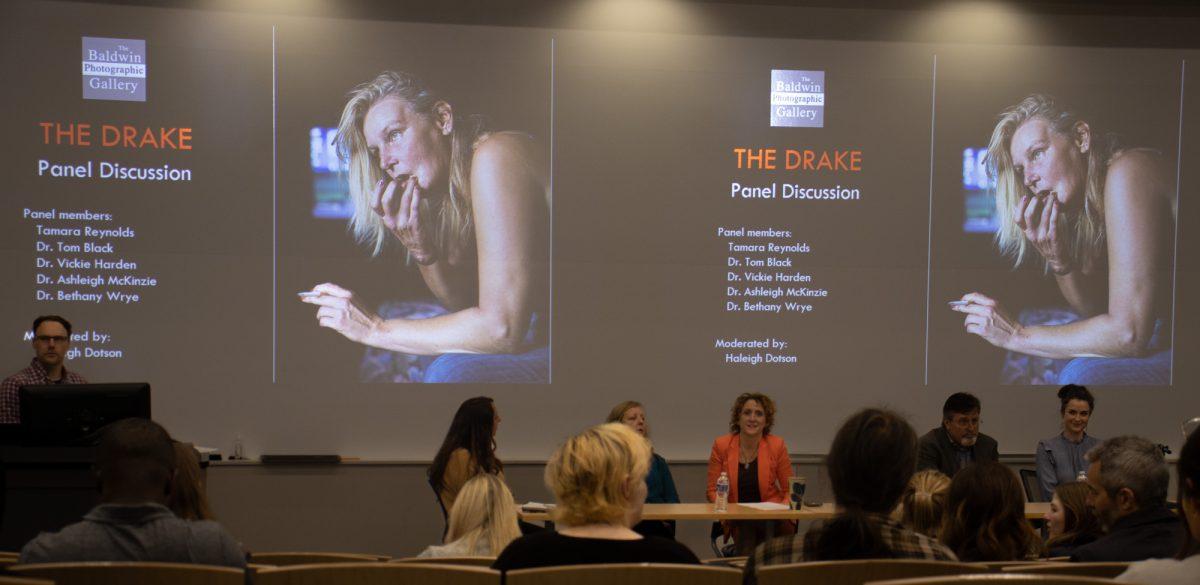
During the panel, the different professors assesed the photographs in relation to their specialties. This resulted in a thorough discussion about how addiction relates to education, social issues and healthcare.
Together they collaborated to discuss the impact, influence and inferences that could be drawn from Reynolds documentation of “The Drake”.
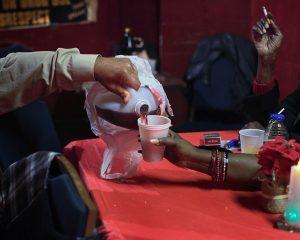
One of the first questions tackled was brought upon by the topic of community. The photograph
shown in relation to the question depicted a group of hands, one pouring a drink. The panelists
brought into consideration the way it not only brings up the idea of strangers coming together
especially during struggles, in this case addiction, but also a difference between men and
women in terms of their sense of belonging and the experiences they go through.
Another topic that was discussed within the panel was in relation to shame and choices. An
image depicting a woman squatting led Tamara to talk about how she sensed that the woman
had a disability of some sort. An emotional disability is what Tamara later on refers to it as.

She dived deeper into explaining that some disabilities relate towards choice and resources.
Sometimes these individuals who suffer from addiction lock themselves in a cycle of abuse
because they feel shame in asking for help even when they are desperate.
The topic of resources was further explored in two other photographs. One image depicted a
woman named Amanda and the other depicted a transwoman named Taylor.
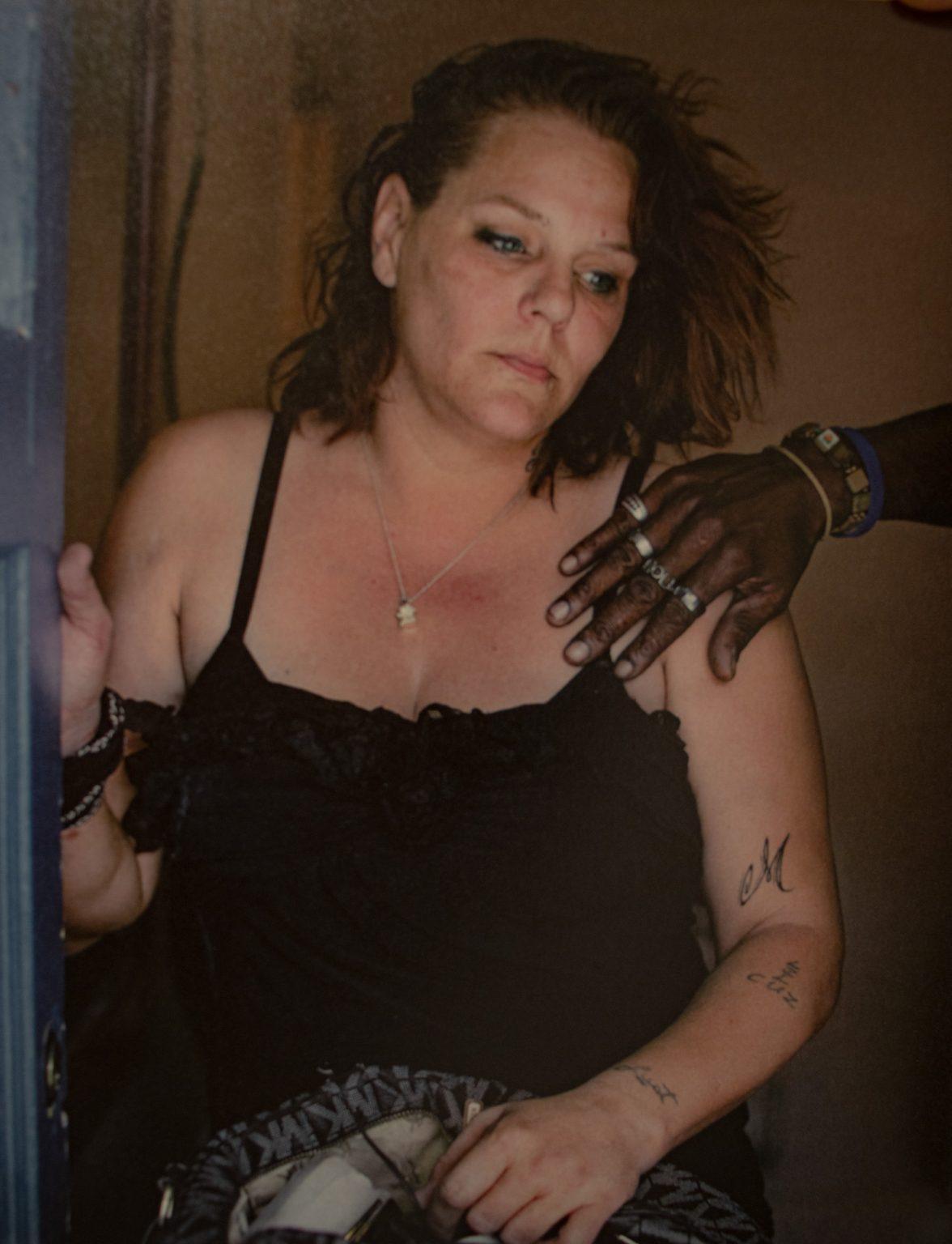
The image with Amanda brought up the issues with the healthcare system. Dr. Wyre brought up
many questions about what factors affect healthcare and how investing in healthcare means
receiving better healthcare. One comment by the panelists specifically referred to how changes
need to be made to these organizations that are meant to help with recovery from addiction in
order to get these problems fixed.
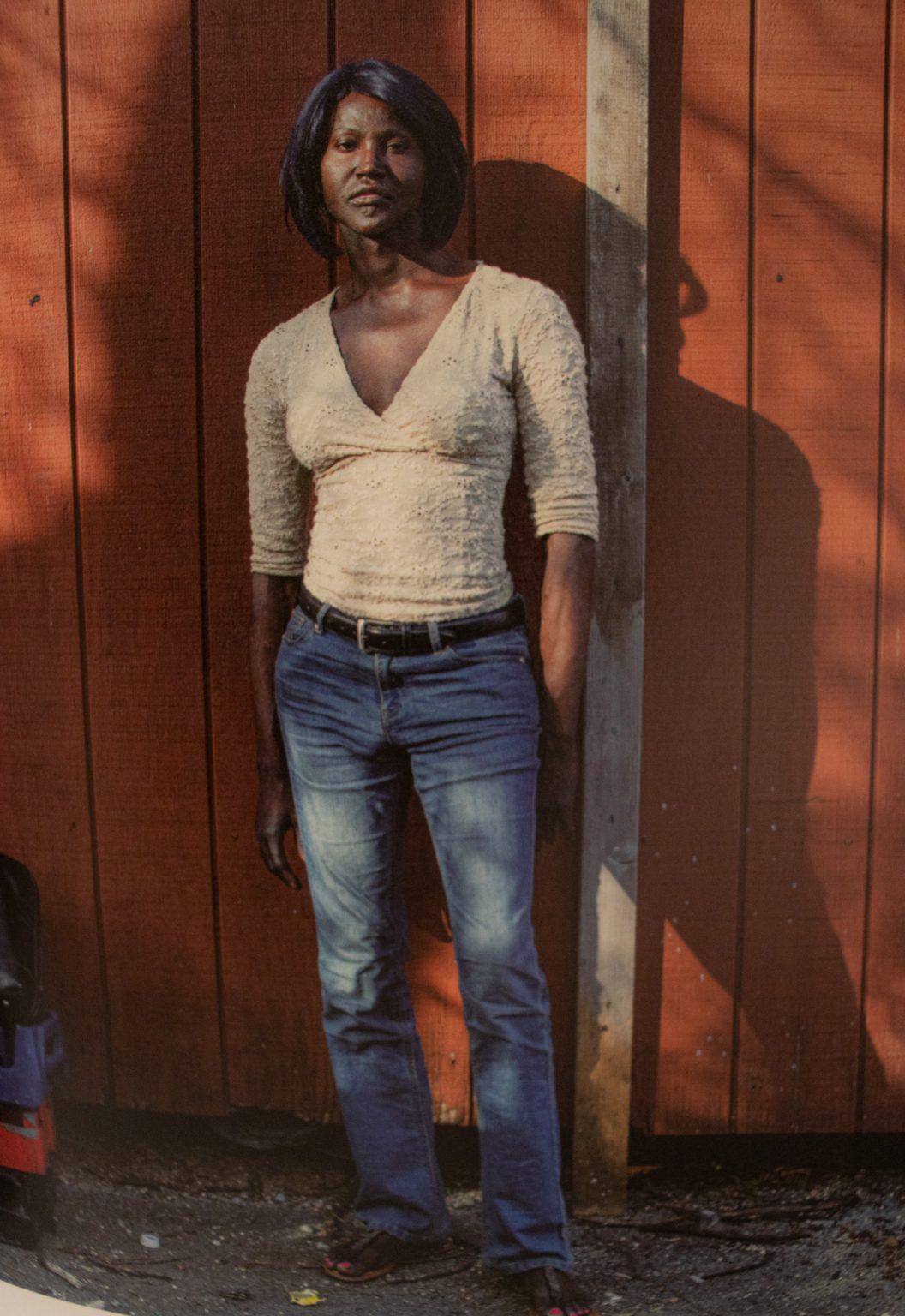
The image with Taylor also brought up issues with resources alongside oppression. Reynolds
recalled that she had asked Taylor why she did not go to a woman’s center. Taylor responded
she was not welcomed there. When Tamara asked about why she did not go to the men’s
center, Taylor responded that in regards to her safety she did not feel comfortable being there.
However, Taylor’s picture also brought into discussion the topic of survival. Her stoic face and
firm stance gave off the energy of empowerment which many agreed was an accurate
description for all the individuals Reynolds photographed.
Throughout the panel a few questions focused on more general topics in relation to Reynolds’
work. She answered two important questions.
The panel wondered how she went about gaining the trust of the individuals she photographed. Reynold’s answered that she gained their trust through honesty, transparency and by relating to them. She showed up everyday and was there for them which built a relationship. Reynolds also had experienced addiction and had a different level of understanding than those who don’t have experience with or around it.
The other important question presented was in regard to why these individuals return to the lifestyles that come with addiction. Again, Reynolds related her experience and opened the conversation to understanding. She said that to the individuals, addiction was their priority and their saving grace. They feel they have losted their ability to make any other choice; These individuals could no longer see how to get out especially since they had no one to rely on.
Taking everything that was discussed into consideration, the biggest take aways revolved around
empathy and compassion.
“The Drake” by Tamara Reynolds emphasizes the way we stigmatize people who suffer from
addiction. We as the audience should notice the pain and survival that is embedded in
these photographs. While our perspectives may not align when we draw inferences
about the potential background stories related to the subject matter, the concept behind “The
Drake” speaks to the human condition. It invites the viewers to use their own human perspective to
empathize with the people in the photographs.
Larry Rincon is a Movie Reviewer and Lifestyles Reporter for MTSU Sidelines.
To contact Lifestyles Editor Destiny Mizell, email lifestyles@mtsusidelines.com.For more news, visit www.mtsusidelines.com, or follow us on Facebook at MTSU Sidelines or on Twitter at @Sidelines_News.
For more news, visit www.mtsusidelines.com, or follow us on Facebook at MTSU Sidelines or on Twitter and Instagram at @mtsusidelines.


